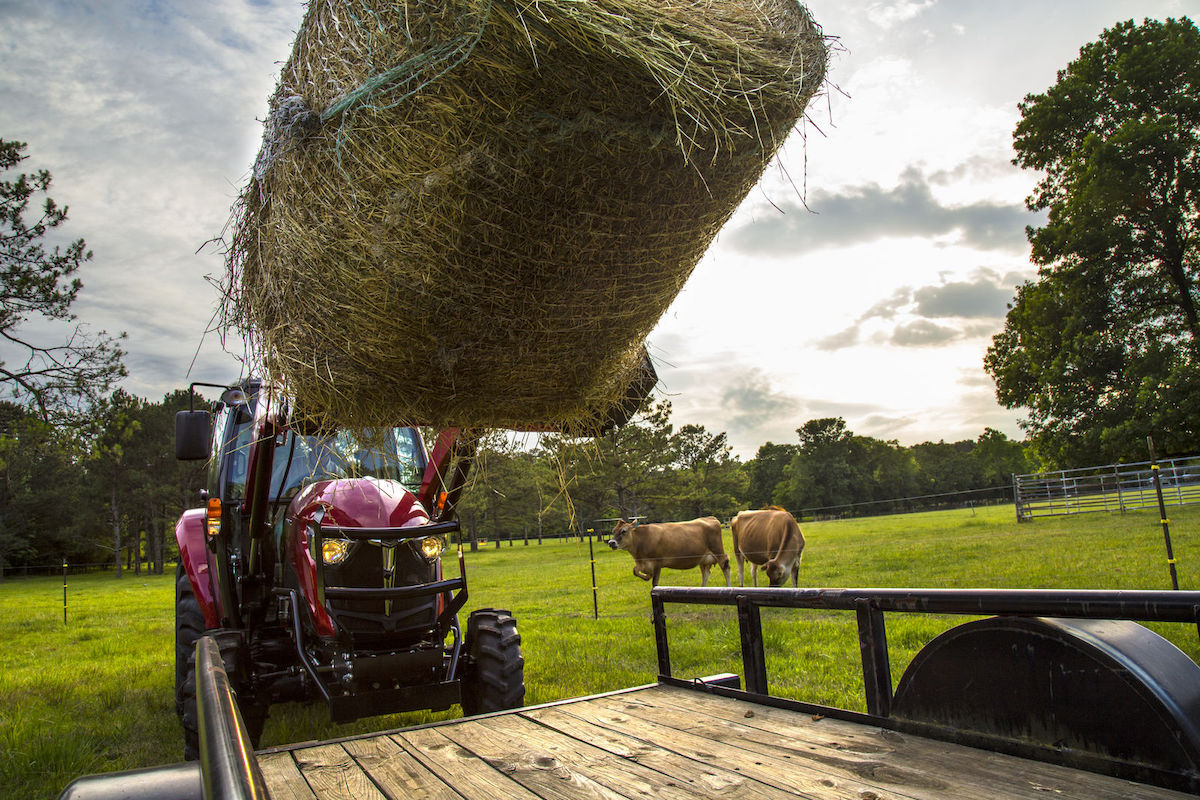Your Guide to Hay Baling and Production
fundamentals
fundamentals

Are you ready to take hay baling into your own hands? Instead of relying on others, you can produce and process this valuable resource with the right compact tractor and attachments. Whether you’re feeding your own animals or want to sell hay to locals in the community, this guide covers everything you need to know to get started producing and baling hay.
If you’ve owned a farm or kept livestock, this may seem elementary. However, many beginners and hobby farmers wonder: What’s the difference between hay and straw? Though the appearances of bales might be similar, they’re very different products.
Hay is made from grasses or legumes that have been cut and dried. It includes the leaves, stems, and seeds of the plants, and is used as a nutritional food source for animals. Good quality hay should be green and not too coarse in texture.
Straw is the dried stems of grains like wheat and barley after the crops have been harvested. Because the majority of the plant’s nutritional value is in the grain, straw is not a good food source. It is primarily used as bedding for animals, mulch, or decoration.
Hay is fairly easy to source and purchase, but there are numerous reasons why you might consider growing it on your land.
The process of growing and harvesting hay does take some careful planning. These are the essential steps required for a successful crop.
There are a wide range of crops that can be used to grow hay. To determine which will grow best on your land and meet your needs, consider nutritional value, livestock preferences, soil type, and climate. Some of the most popular seed options include alfalfa, clover, oats, and millet, as well as grasses like brome, Timothy, fescue, and Bermuda.
Once you’ve identified the type of crop you’d like to grow and the area of land you’ll use, it’s time to prepare the soil for planting. This means removing weeds, tilling the ground, and adding amendments like fertilizer. Fortunately, most hay-producing crops grow quickly and will crowd out other invasive plants. Those in especially dry climates may also want to consider installing an irrigation system.
When it comes to cutting hay, timing is everything. First, plan to mow before the plants have the chance to flower or bloom, but are full of leaves. This maximizes the overall nutritional value. Second, it’s ideal to mow when you have a solid stretch of dry weather. This will help speed up the drying process and create a higher-quality product. As you mow, try to keep long, straight lines that will make the tedding and raking process much easier.
After cutting down your hay crop, you can kickstart the drying process using a tedder attachment. This helpful implement spreads and fluffs the hay to make it dry more quickly and prevent the growth of mold and bacteria. Then, when the hay is nearly dry, you can begin raking it into windrows that can be easily collected by your tractor’s bailer attachment.
If you’re unsure about the dryness of your hay, give it the twist test. Grab a handful of hay, and if it breaks when you twist it in your hands, it’s sufficiently cured. However, don’t let your hay dry for too long. This can result in significant leaf loss where most of the nutritional value is held.
Once you’ve reached the baling stage, most of the hard work is behind you. Simply run your baler attachment along the windrows and collect the hay. To help your bales hold up to the elements, keep them stored out of rain and snow, and leave space between each bale so air can circulate. You may also want to consider storing them in a fenced area to keep out unwanted animals looking for a snack.
With the help of a compact tractor from Yanmar and the right hay harvesting attachments, you’ll wonder why you haven’t been growing your own hay all along. Here are the essentials you need to get started.
The Yanmar tedder rake actually gives you three tools in one easy attachment. It can ted, rake, and spread your hay without the need to change functions. It’s also easily adjustable to a range of heights so you can cover every square inch with precision.
No setup would be complete without the round baler attachment. It collects the hay, creating easily manageable round bales between 40 and 60 lbs. Operation of the round baler is especially simple thanks to the remote control panel for bale gate opening and closing.
At Yanmar, we’re dedicated to providing customers and owners with the best experience in the industry. Our expert team is here to answer your questions, offer solutions, and share helpful resources and insights. No matter your need, we’ll go above and beyond to meet it. Please don’t hesitate to connect with us or give us a call at 678-551-7369.